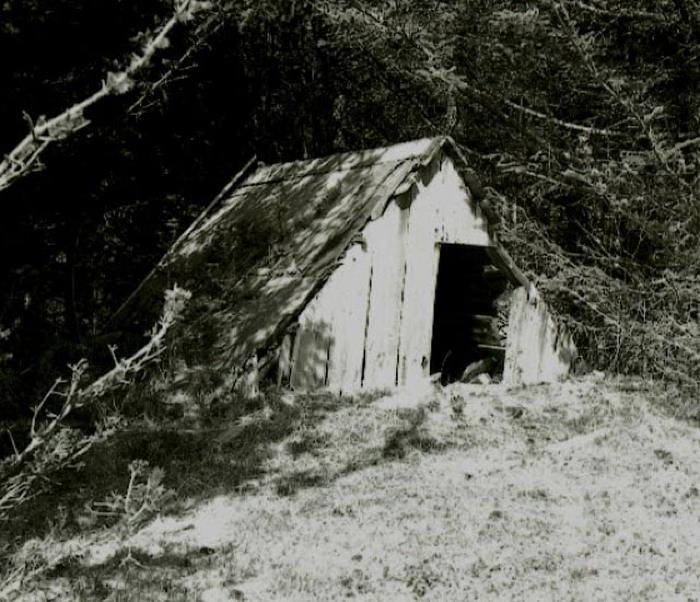Shed — SaRayaq

Outbuildings have been a part of Alutiiq communities for thousands of years. In studies of ancient Alutiiq settlements, archaeologists find smokehouses, storage sheds, and a variety of small structures that illustrate how people used the space outside their homes. Historic sources tell us that Alutiiq families also built small dwellings for menstruating women and women in labor. To protect hunters from the life-giving power of women, women were secluded in small structures adjacent to their homes. This ensured that the hunter’s ability to kill animals was not diminished by his wife’s power to create life. Men also stored their hunting gear outside their homes to avoid accidental contamination.
Today, Alutiiq families keep sheds to store gear, supplies, and even food. This cool, dry shelter is an excellent place to store leafy alder branches for use in the banya. The branches are tied in pairs and hung to dry. Other people use their sheds to cure meat, stockpile dried fish, and keep their hunting and fishing equipment out of the rain.
Not everything stored in a shed is safe, however. A Karluk hunter remembers a large brown bear that kept raiding his shed, stealing his winter supply of dried salmon. Each night the bear reached into the little wooden shelter, pulling out as much fish as he could and leaving a big mess for the hunter to find in the morning. Angered by several nights of raiding, the hunter decided to wait for the bear. As darkness fell, he hid in the shed, standing quietly for hours. Sure enough, the bear returned looking for a meal. With his rifle on his shoulder, the man kicked the door open and shot the very surprised bear standing a few feet away. That was the end of the bear.
